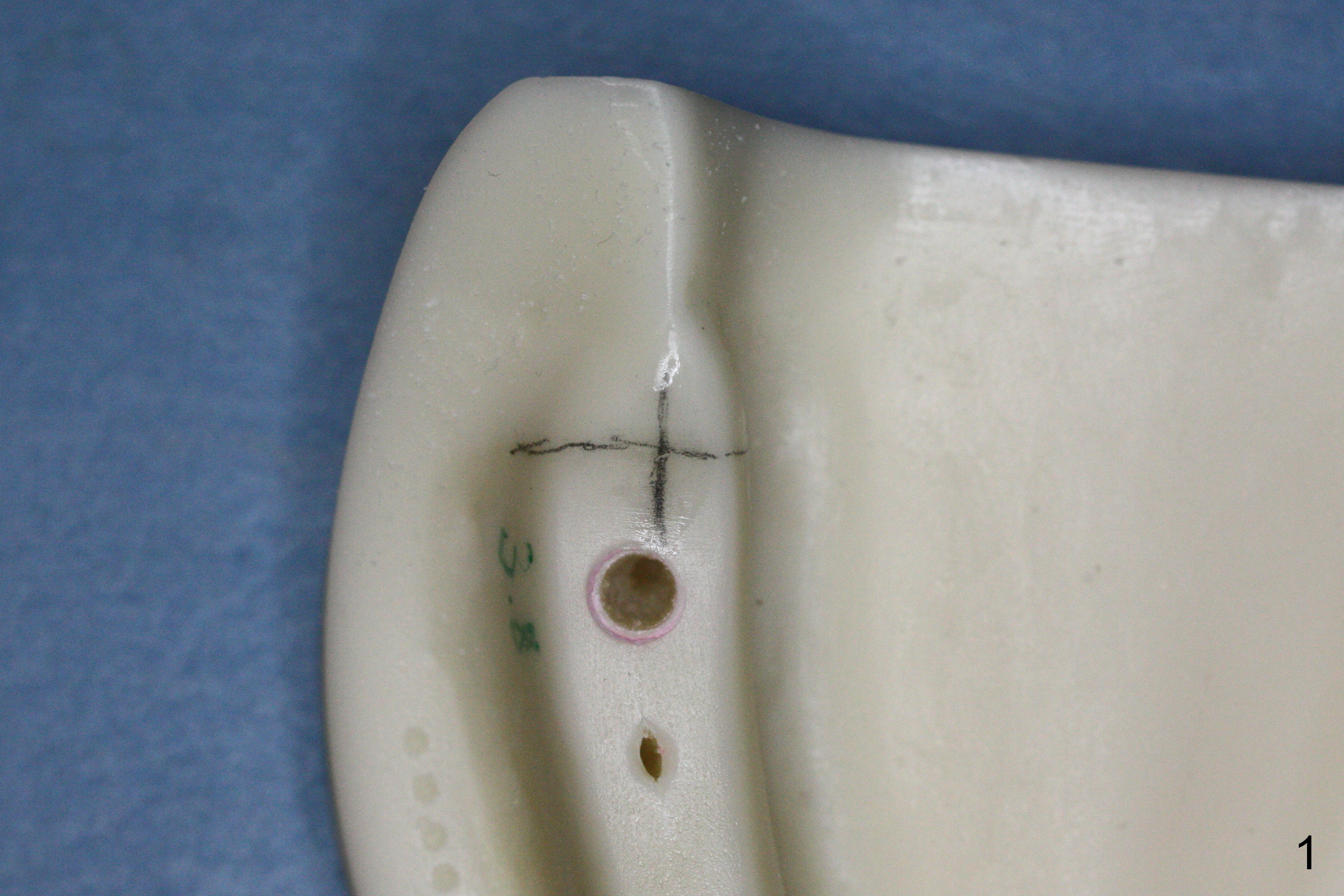
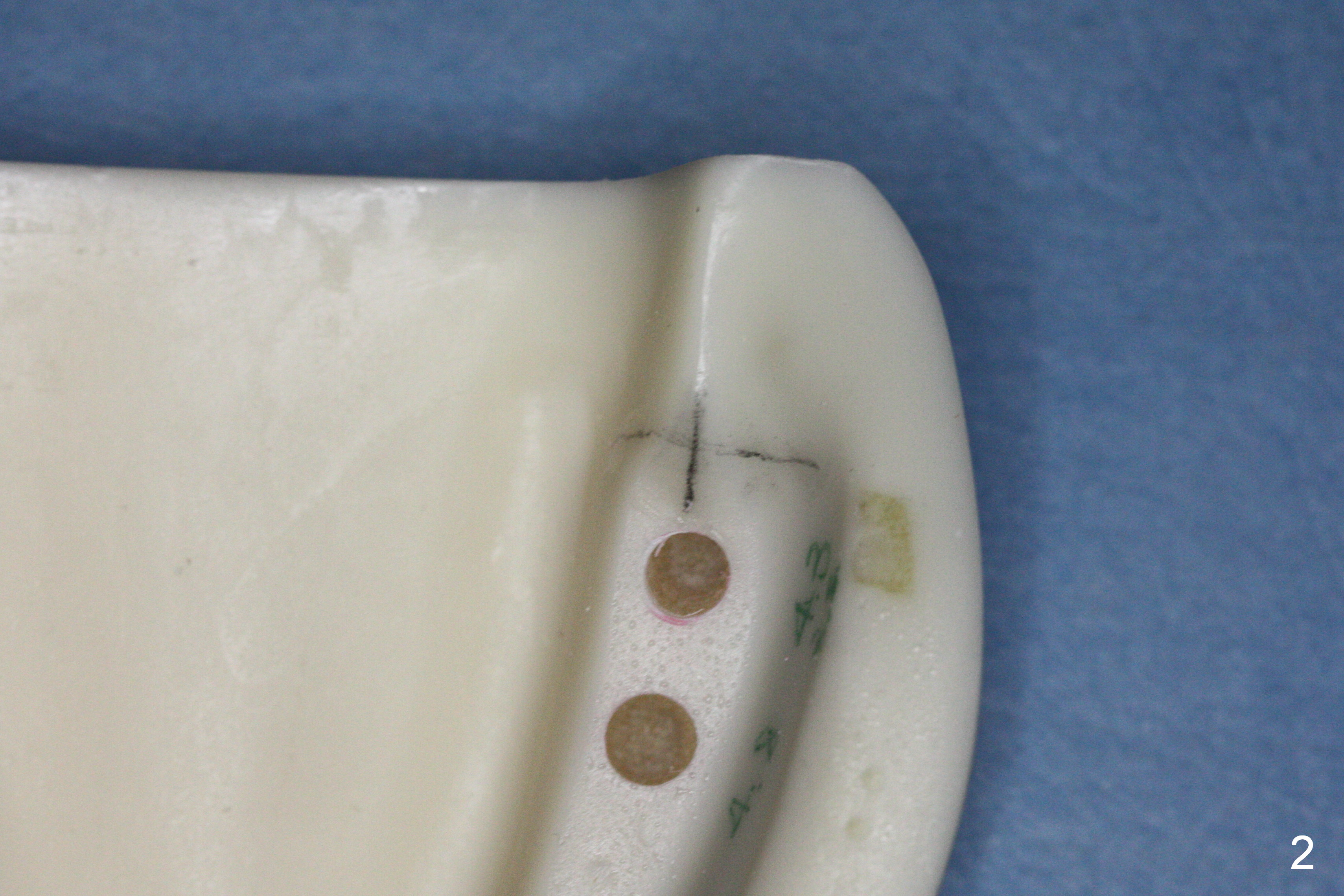
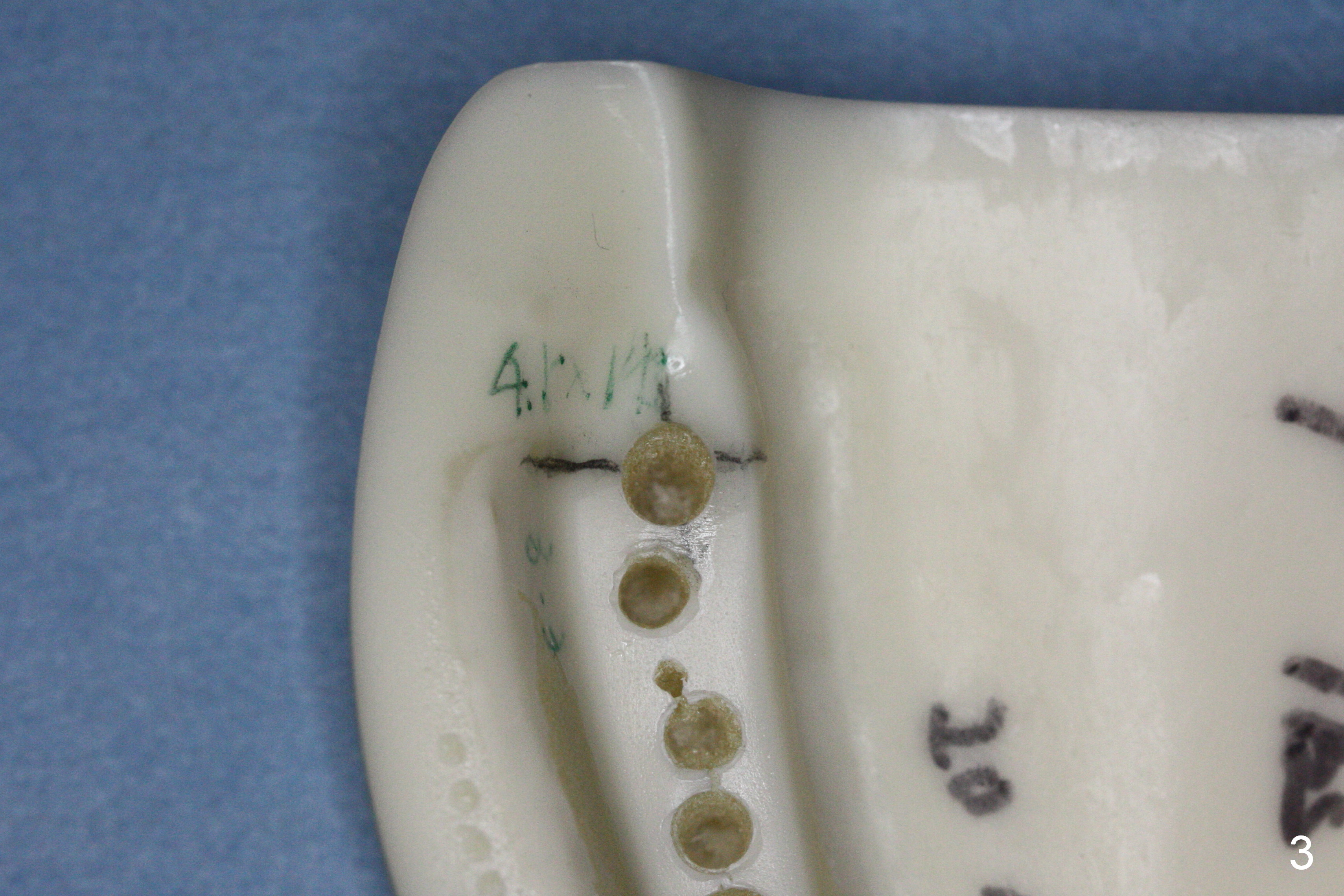
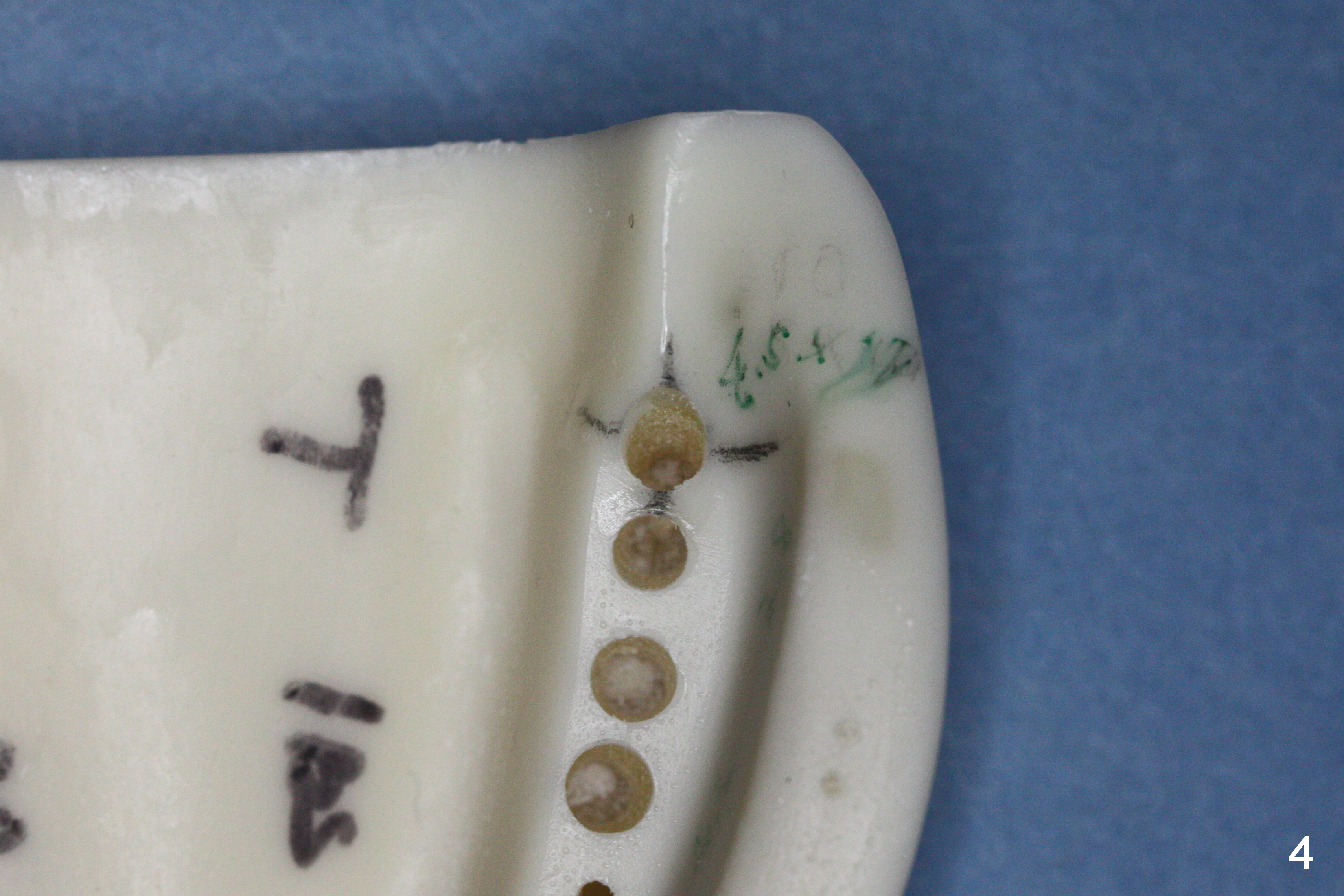
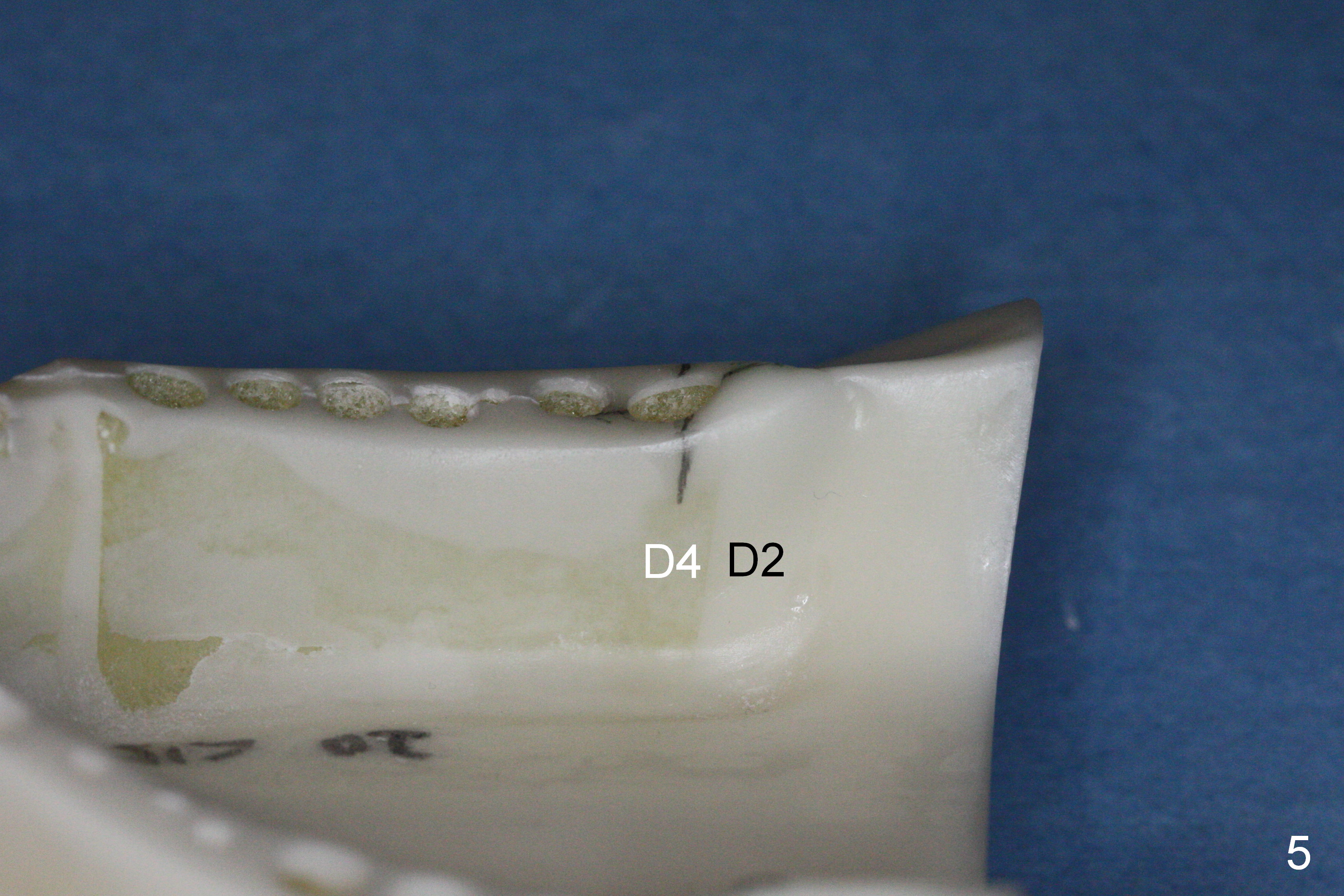
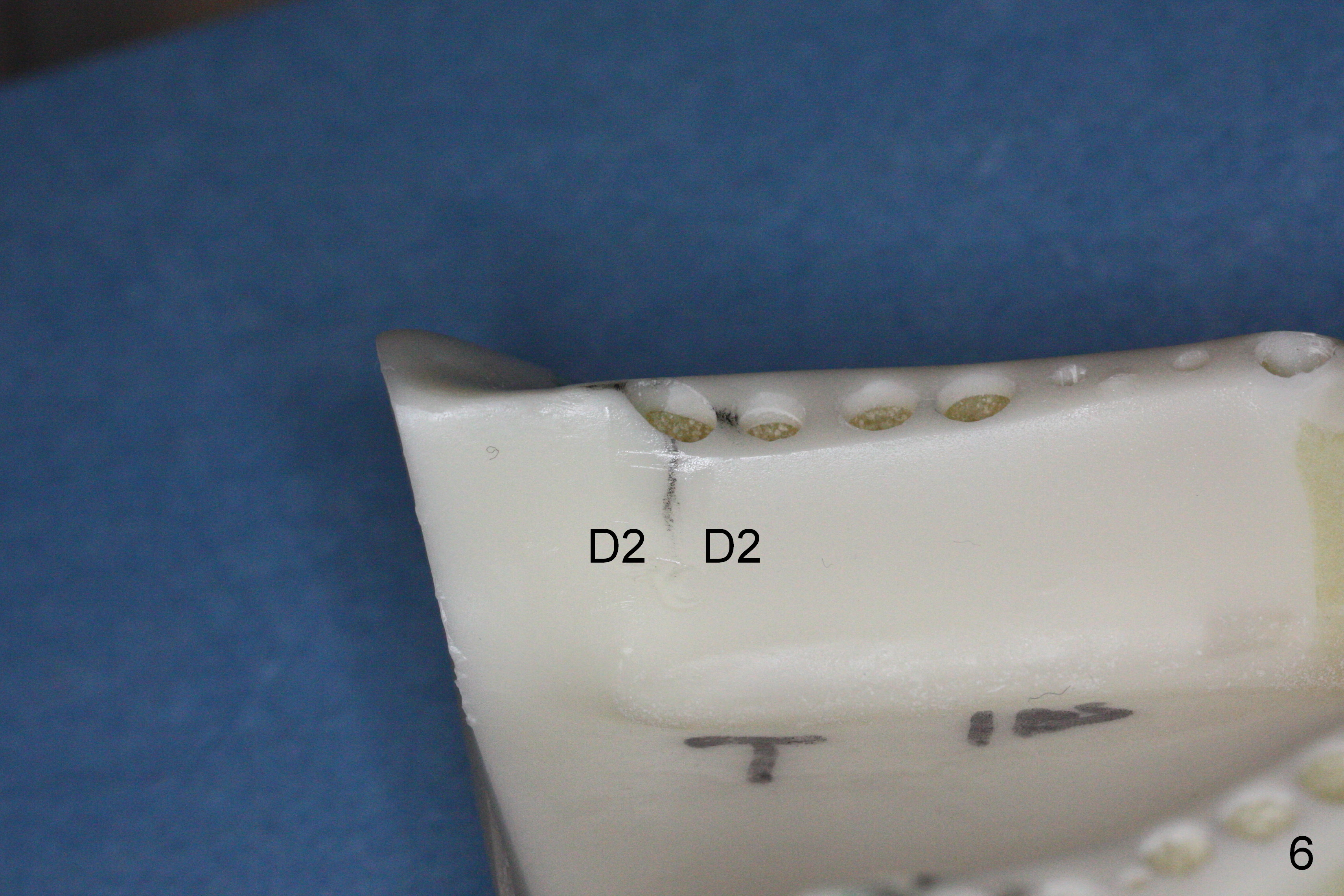
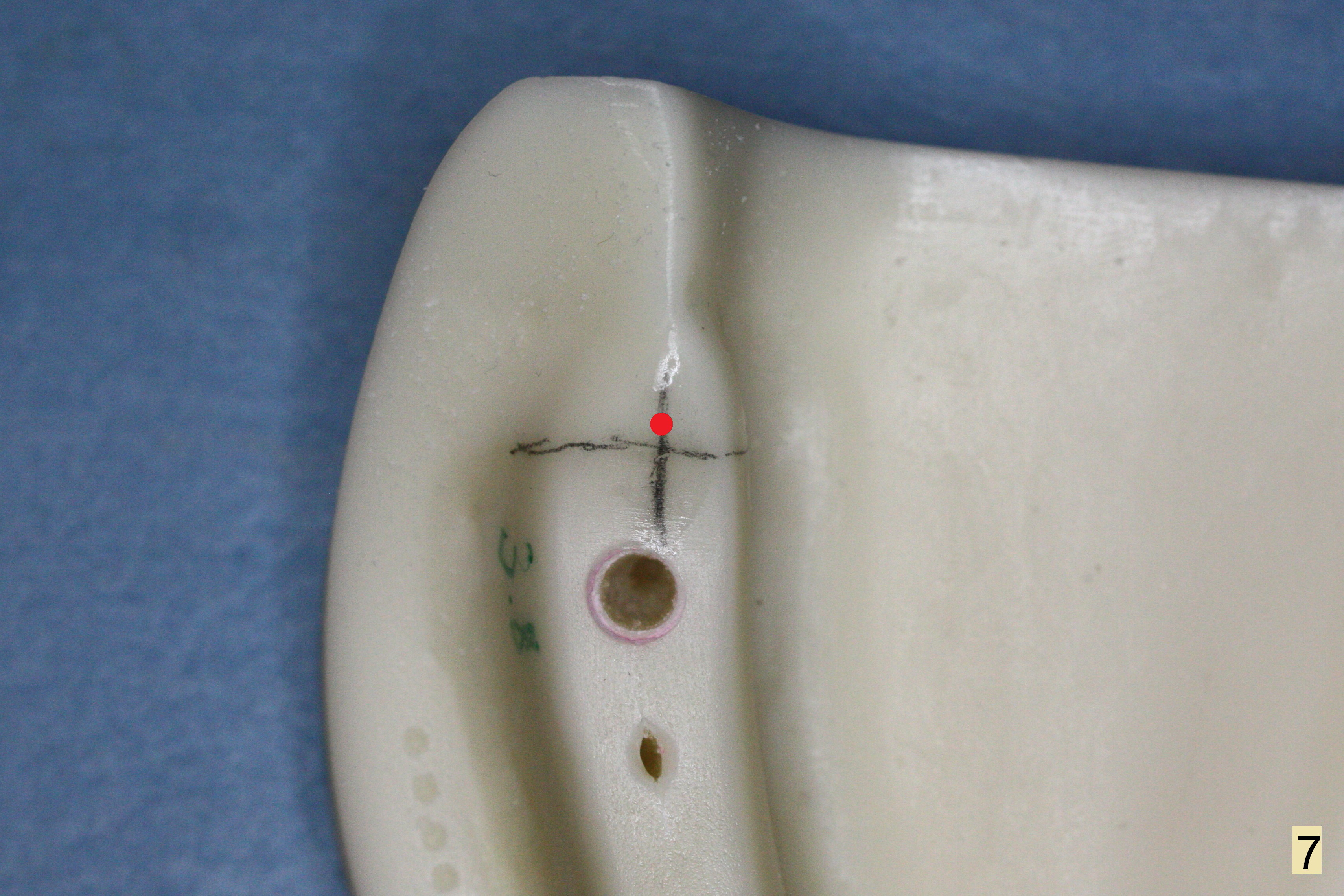
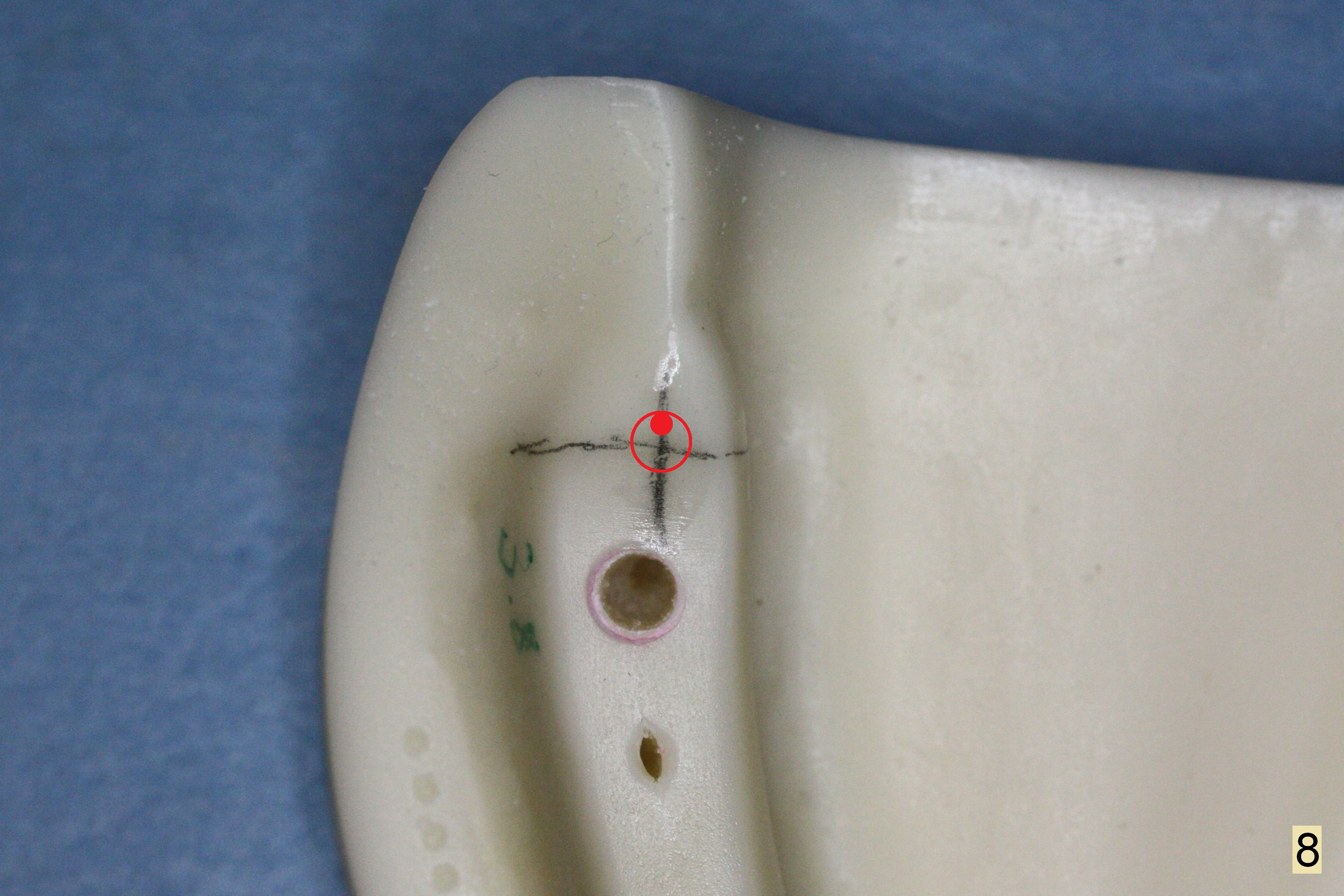
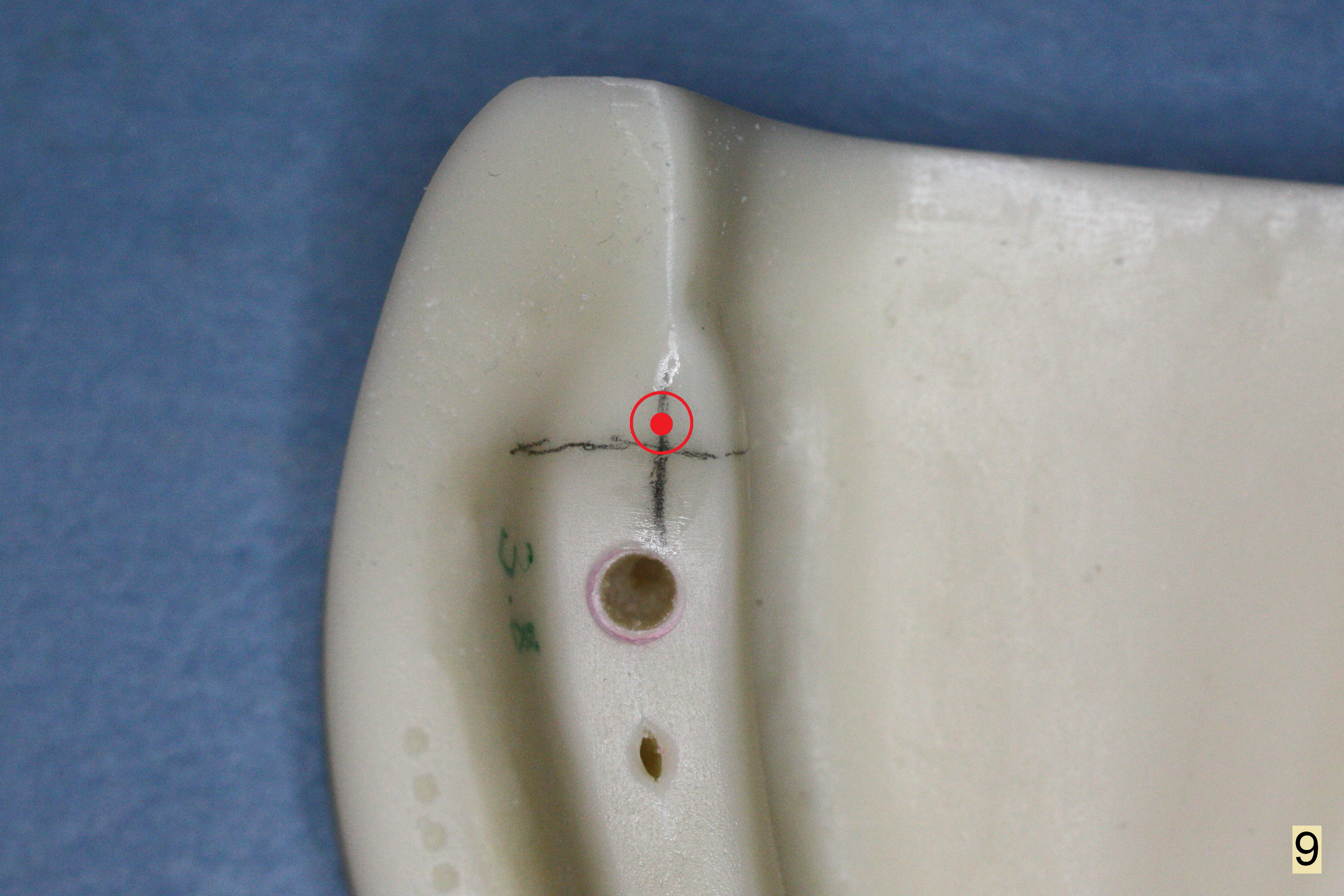
 |
 |
|
 |
 |
|
 |
 |
|
 |
 |
|
 |
Proposal of Study to Demonstrate Advantage of Single-Drill vs. Multi-Drill Osteotomy in Immediate Implant
One of challenges of immediate implant is that osteotomy is established in an uneven socket as shown in the retromolar area of IBS models (Fig.1,2 (cross)). Because of the slope, it is reasonably expected that the final osteotomy using multi-drill system (MD) will be deviated to the lower end of the slope (Fig.3). It is unexpected that the final osteotomy on the left side remains in situ (no deviation) using the same MD system (Fig.4). Why?
Turn the models so that we look at the lingual aspect. The right mandible seem to consist of two portions of bone at the retromolar region: D4 and D2 (Fig.5), whereas the left mandible appears to have one type of bone mesial and distal to the drawn line: D2. (Ted: ask Dr. Wang whether the assumption/observation is right or not)
It appears that drill drifting is mainly due to different types of bone density. Drills drift to the area with the less resistance. Bone morphology (slope) is less important.
The buccal plate of the extraction socket is lower, thinner and more porous than the lingual one. Buccal drifting of osteotomy are associated with two drawbacks. The buccally-placed implant may cause bone resorption of the buccal plate. It is difficult to restore. To compensate for drifting clinically, initial osteotomy starts away from the less resistance area (lingually (clinically); distally (in model, Fig.7)). By the time of final osteotomy is finished using MD system, the center of the osteotomy is most likely in the center of occlusal table (Fig.8).
In contrast, it is not the same when single-drill (SD) system is used clinically: the center of final osteotomy remains the same (Fig.9). That is the implant is placed too lingually. It is also hazardous to restoration.
An in vitro study using the IBS model is designed to compare MD (control group) and SD (test group) osteotomy. Ten models (used after training courses) will be assigned to each group. The study should prove that SD system does not deviate irrelevant to bone density differentiation and bone morphology (slope). There is no need for compensation for SD.
Return to IBS
Xin Wei, DDS, PhD, MS 1st edition 10/09/2016, last revision 11/24/2016